Written by Penny Sparke
The story of plastics starts in the nineteenth century with the patents for a number of semisynthetic materials. The aim was to bring luxury goods—previously made of expensive, handcrafted, natural materials—within the reach of the socially mobile nouveau riche. The new products—jewelry, pin boxes, hair ornaments, picture frames, mirrors, combs, and many more—brought unbridled pleasure to their owners through conspicuous consumption, ownership, and the associated social status.
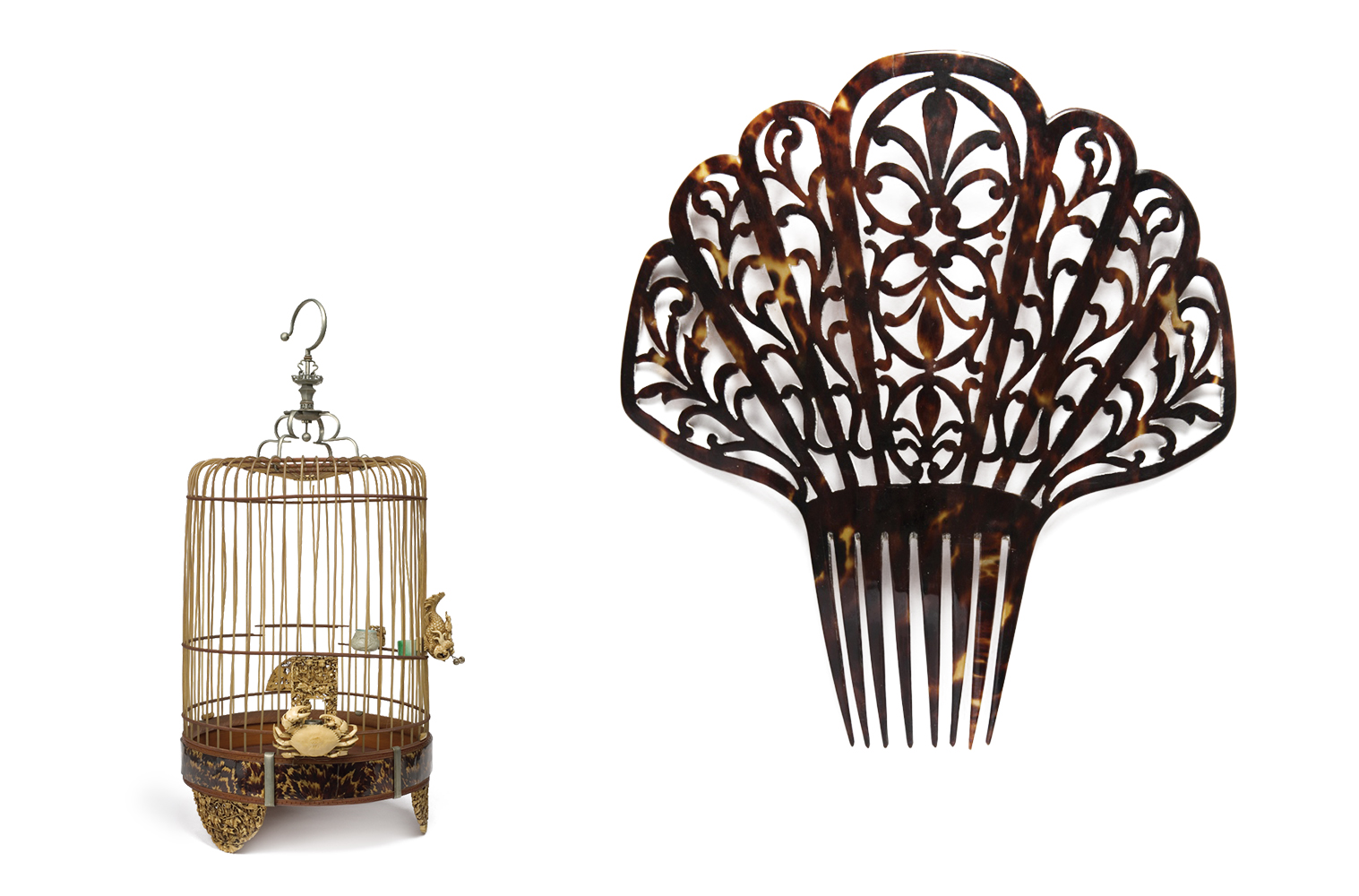
(left) Birdcage (China), ca. 1901; Made by Liang Qichang (dates unknown); Buffalo horn (vertical bars), lacquered bamboo (horizontal hoops bracing bars), ivory, tortoiseshell (with substrate of silver leaf on vermillion on wood), cedar wood, various metals (brass, possibly paktong, white metal), jade, glazed porcelain; H x diam.: 86 x 39.4 cm (33 7/8 x 15 1/2 in.); Cooper Hewitt, Smithsonian Design Museum; Gift of Mrs. Herman Frasch, 1916-12-1-a/f. (right) Comb (Peineta) (Cuba), 19th century; Shaped and pierced tortoiseshell; H x W x D: 26 x 23.5 x 3 cm (10 1/4 x 9 1/4 x 1 3-16 in.); Cooper Hewitt, Smithsonian Design Museum; Gift of Belmont Freeman, for the family of Maria Magdalena Kjellesvig González de Freeman, 2018-41-1
Now in the early twenty-first century, the multiple plastics that surround us on a daily basis are more likely to evoke guilt than pleasure. The painfully slow degradability of the fully synthetic plastics and the complex plastic blends from which our running shoes, shopping bags, computers, food packaging, picnic plates, automobile components, and a myriad of other items in daily use are constructed, have engendered huge environmental problems. With less than a fifth of the total amount being recycled, the rest is left to inflict untold damage on the planet’s animal and plant life.
That dramatic turnaround in attitudes toward plastics happened in little over a century. It mirrored the general shift that occurred with the growing realization that the rampant consumerism that had driven social change and economic growth from the nineteenth century onward had a flipside, and that, in acquiring our material comforts, we were inadvertently destroying the natural environment on which we depend for our survival. From the 1960s onward, partly through writings such as Rachel Carson’s 1962 book Silent Spring, which alerted us to the growing quantities of toxins in our environment, and Vance Packard’s study of two years earlier, The Waste-Makers, an outcry against built-in obsolescence, an awareness gradually grew about the damaging effects of the double-edged sword that was consumer capitalism.
Plastics have not always been the enemy, however. During the greater part of the twentieth century, we welcomed plastic products into our homes, offices, and cities on a massive scale. They were carriers of the message of modernity and they brought with them a link to the progressive world of advanced technology and the wonders of science. The widespread acceptance that they received was largely a result of the forms bestowed on them by industrial designers. Unlike handworked wood, for example, which can take on only certain forms, plastics lack an innate shape or color and have a fluidity that gives them a huge flexibility.
Before they became the heroes of the modern world, however, plastics had performed a range of other roles. Natural plastics—amber, horn, wax, shellac (from the “lac” beetle), gutta-percha (from the Palaquium tree), ivory, and tortoiseshell, for example—went back to antiquity. Amber, usually used for jewelry, was mentioned by the ancient Greek Pytheas, in the fourth century BCE. Natural plastics were joined in the mid-nineteenth century by the semisynthetics, among them vulcanite (rubber with sulphur added), which was widely used for imitation jet jewelry; casein (made from milk curd), which took on many shapes and colors and which was also used widely as a substitute for more precious materials; and celluloid, once again a favorite substitute, but the properties of which (apart from its flammability) also made it the perfect material for billiard balls and photographic and cinematic film. Semisynthetics acted either as stand-ins for natural materials or as utilitarian substances facilitating other new developments. When the first fully synthetic phenolic polymer—Bakelite—appeared in 1907, it followed the latter route, becoming the perfect material for the new electricity industry.
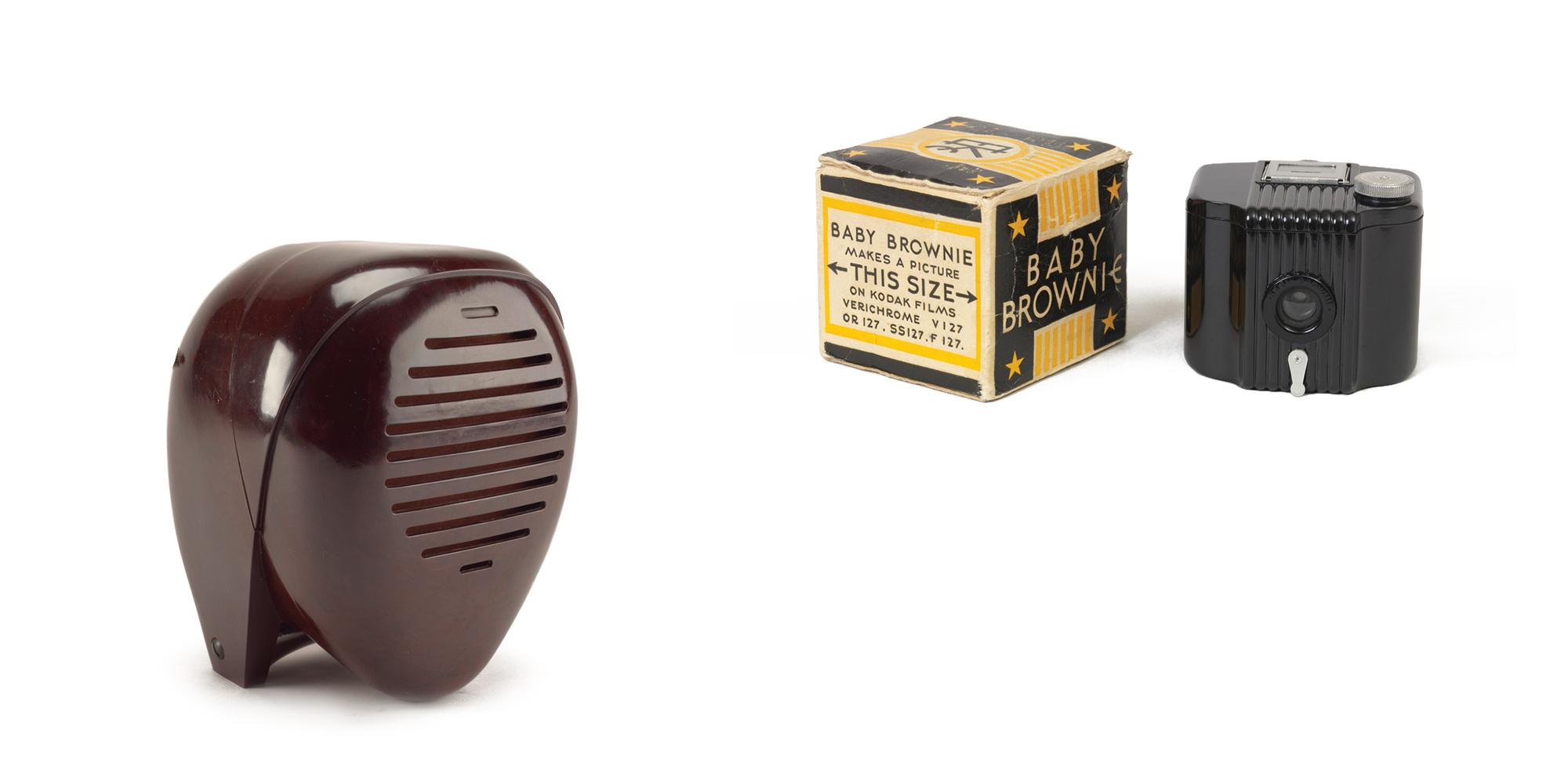
(left) Radio Nurse Intercom Speaker, 1937–38; Designed by Isamu Noguchi (American, 1904–1988); Manufactured by Zenith Radio Corporation (Chicago, Illinois, USA); Molded Bakelite, metal; H x W x D (without cord): 19.8 x 17 x 16 cm (7 13/16 x 6 11/16 x 6 5/16 in.); Cooper Hewitt, Smithsonian Design Museum; Gift of Mel Byars, 1991-59-61. (right) Baby Brownie Camera and Packaging, ca. 1934; Designed by Walter Dorwin Teague (American, 1883–1960); Manufactured by Eastman Kodak Company (Rochester, New York, USA); Molded Bakelite, metal, glass; H x W x D: 8 x 8.5 x 7.3 cm (3 1/8 x 3 3/8 x 2 7/8 in.); Cooper Hewitt, Smithsonian Design Museum; Gift of George R. Kravis II, 2014-25-4-a,b
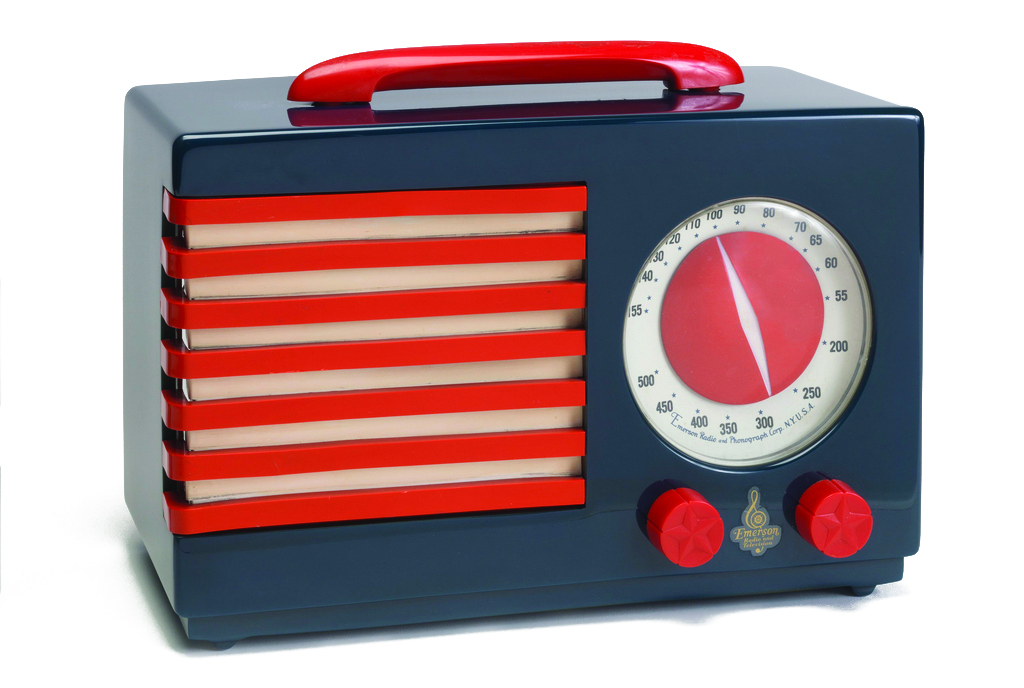
Patriot Radio, 1940; Designed by Norman Bel Geddes (American, 1893–1958); Manufactured by Emerson Radio and Phonograph Corp. (New York, New York, USA); Cast phenolic resin (Opalon), molded urea plastic, molded cellulose acetate, embossed acetate, metal; H x W x D: 20.3 x 27.9 x 14 cm (8 x 11 x 5 1/2 in.); Cooper Hewitt, Smithsonian Design Museum; Gift of George R. Kravis II, 2014-10-1
All that was to change in the 1920s, when industrial designers began to transform plastic products into magical objects. Emerging from the commercial backgrounds of advertising and window display, the new American designers—Norman Bel Geddes, Raymond Loewy, and Harold Van Doren among them—already knew how to meet the symbolic requirements of consumers. They created meanings and identities for a range of new plastic products emanating from the new technology-driven industries. In the words of Jeffrey Meikle, “Americans viewed plastics as miracle materials from which to shape the contours of a desired future.”[i] Raymond Loewy’s 1929 redesign for the Gestetner duplicator boasted a new Bakelite body-shell, which brought the object’s mechanical parts together into a single visual entity. Bakelite was soon joined by a range of new phenolic plastics in a rainbow of colors, among them Catalin, which was used for toys and jewelry, and a number of urea formaldehyde resins, among them Vinylite, which also introduced new possibilities for colored products. While plastics and design developed a natural synergy with each other, the former were also the perfect vehicle for the 1930s product style called “streamlining”—a modern aesthetic applied to automobiles, refrigerators, and a wide range of smaller mass-produced plastic objects with bodyshells, such as radios—as its rounded forms meant that products could be removed from their molds with ease.
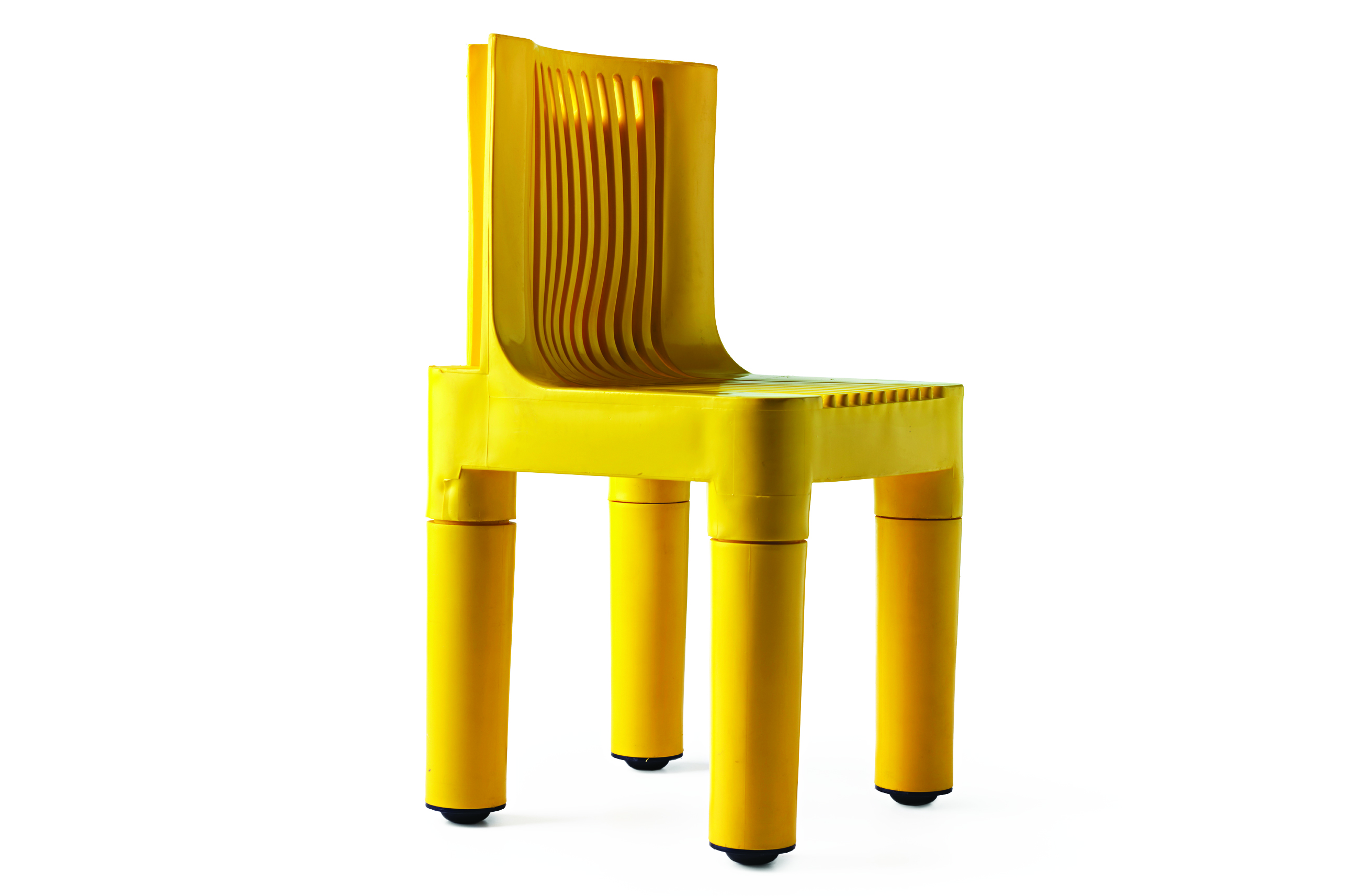
Child’s Chair, 1964; Designed by Marco Zanuso (Italian, 1916–2001) and Richard Sapper (Italian, 1932–2015); Manufactured by Kartell S.p.A. (Milan, Italy); Polyethylene
Plastic products suffered a setback in the immediate post–World War II years when, for a few years, consumers looked to the comfort provided by traditional goods and the authenticity of natural materials. It was a short-lived interlude, however, as designers once again came to the rescue of plastics and rehabilitated the materials as the symbols, once again, of modernity, progress, and optimism. That rehabilitation took place not in the United States, but in Italy, where an indigenous plastics industry had developed in the 1930s when economic nationalism prevailed. Postwar, through the visual innovation of its products, Kartell, the manufacturer of plastic products, became preeminent in the field, in 1953 employing designer Gino Columbini, who made mundane products like colanders and lemon squeezers look like enticing items of modern sculpture. The main challenge to Italian designers was to make large items, such as chairs, completely out of plastics. Kartell took on designer Marco Zanuso to address that task and in 1964 the company launched a polyethylene child’s chair (above), which soon inspired others to follow suit, among them Vico Magistretti, who created the Selene chair out of ABS plastic for Artemide in 1967, and Joe Colombo, who designed chair model 4867 for Kartell in the following year. The minimalist aesthetic they developed, which featured sleek surfaces, organic curves, and bright colors, became the aesthetic for modern plastic products in the 1960s and returned to the materials the reputation for high quality and modern sophistication that they had previously enjoyed in the U.S. in the 1930s.
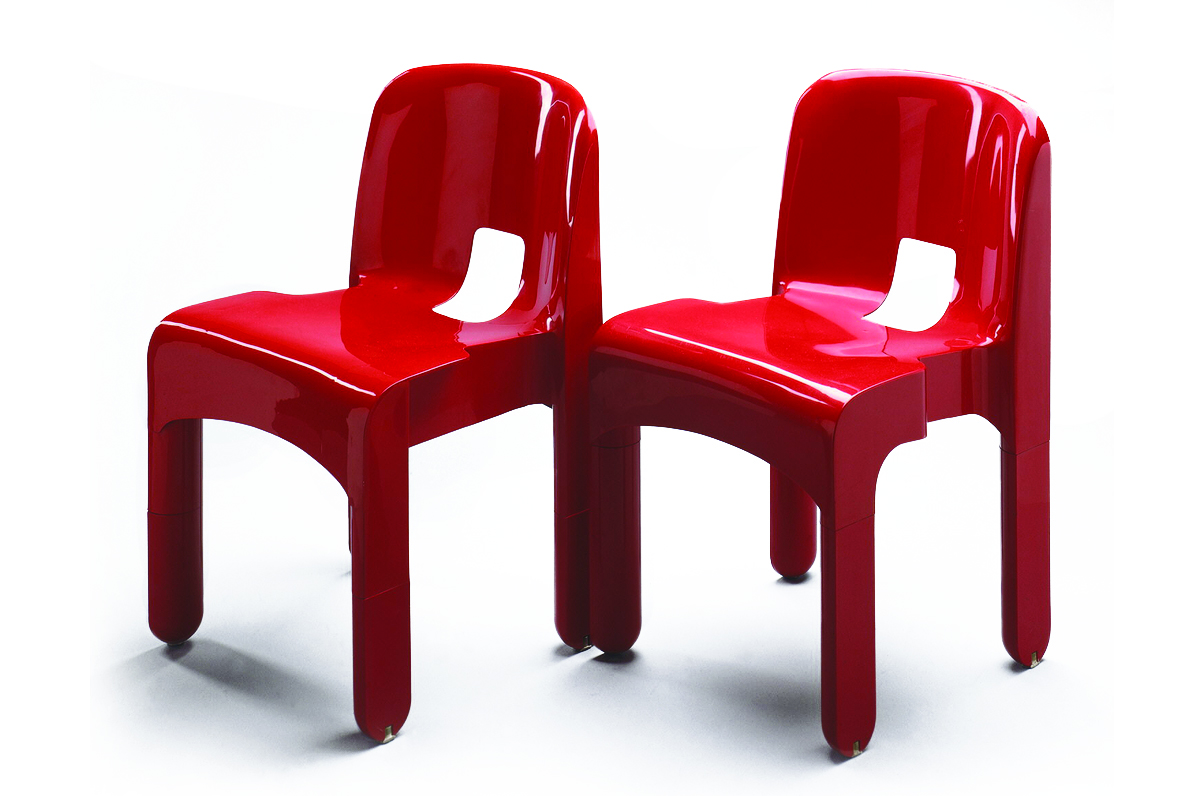
Model 4860 Stacking Side Chairs, 1967; Designed by Joe Colombo (Italian, 1930–1971); Manufactured by Kartell S.p.A. (Milan, Italy); Injection-molded ABS plastic, rubber; H x W x D: 72 × 43.3 × 43 cm (28 3/8 × 17 1/16 × 16 15/16 in.); Cooper Hewitt, Smithsonian Design Museum; Gift of Dr. Herbert Appel, 1986-115-1,2
The oil crisis of 1973 marked the end of the easy accessibility of plastics. That decade also saw the beginning of a popular concern with environmental issues, among them the release of toxins into the atmosphere, the depletion of natural resources, and the excessive production of damaging waste materials, including plastics, which were slow to degrade. While efforts were made to ensure that they could be recycled, the quantities in which they were used for everyday purposes, such as packaging, made that challenging. By the 2000s, the need for symbolism in everyday goods had been overtaken by an interest in ecology, and it became clear that plastics could not, like natural materials, return to the earth from which they had come. As a consequence, plastics ceased to be the miraculous messengers of modernity and became the enemy. Our relationship with them is unlikely to ever be the same again.
Penny Sparke is professor of design history at Kingston University, London. She received her PhD in Design History in 1975 and taught the subject from 1975 to 1999. She has given keynote addresses, curated exhibitions, and broadcast and published widely. Her publications include The Plastics Age: From Modernity to Post-Modernity (1990) and An Introduction to Design and Culture, 1900 to the Present (4th edition 2013).
This article was originally published in the Summer 2019 issue of Design Journal, Cooper Hewitt’s biannual magazine.
Notes
[i] Jeffrey Meikle, “Plastics in the American Machine Age,” in The Plastics Age: From Modernity to Post-Modernity, ed. Penny Sparke (London: Victoria & Albert Museum, 1990), 42.